During the hottest months of the year, when unexpected rain is unlikely, taking full advantage of hanging your washing outside should be a priority. Wouldn't you want that outdoor freshness, wrinkle-free fabric and energy-saving efficiency? Okay, a tumble dryer may be a quicker, less-hassle alternative, but the benefits of putting your laundry on the line are sure to outweigh the slight inconvenience. From bedding to loungewear to towels, we recommend making the most of rising temperatures and line-drying your laundry.
- There's nothing quite like the smell of freshly washed bedding hung in summer's breeze. A natural freshness. Yet, there is a science behind the scent. When solar rays hit wet fabric, a photochemical reaction occurs, producing a range of aldehydes and ketones —organic compounds that our nose associates with pleasant scents, such as 'clean 'cotton or 'fresh linen'.
- Similarly, ultraviolet light from the sun kills germs and eliminates stubborn, unwanted odours. As a natural disinfectant, this proves functional for washing items such as bedding or towels that require a thorough, antibacterial clean.
- Washed cotton bedding, in particular, can sometimes be prone to wrinkling after washing. To avoid the unnecessary chore of ironing your duvet set, we advise hanging your sheets smooth and flat on the line. The weight of wet bedding means gravity will remove the wrinkles for you, keeping your sheets wrinkle-free and ready for use.
- To extend the longevity of your garments, treat quality fabrics gently. Natural fibres such as bamboo and 100% cotton especially need to be handled with care. Therefore, line-drying our bamboo loungewear and 100% cotton bedding will help prevent potential shrinking or wear and tear that can occur from excessive high heat used in a dryer.
- Line-drying is also an eco-friendly method that promotes energy conservation. Since the tumble dryer is the third most energy-consuming appliance in the UK, air-drying instead of tumble drying can help reduce the household's carbon footprint. Hanging sustainable materials, such as 100% cotton and bamboo, as used in bedable products, outside is an energy-efficient way to not only care for your fabrics but also the environment.
People Also Asked
What does "line dry" mean in laundry?
Line drying in laundry refers to the process of hanging wet clothes on a clothesline or drying rack to allow them to air dry naturally. This method utilises the sun and wind to dry clothes, eliminating the need for a mechanical dryer and offering an energy-efficient and gentle drying technique.
Should you line dry your laundry?
Line drying your laundry is highly recommended for several reasons. It's environmentally friendly, as it consumes no electricity and reduces your carbon footprint. Line drying also extends the life of your clothes by avoiding the wear and tear caused by tumble dryers. Additionally, it can help preserve fabric quality and reduce wrinkles in certain materials.
How to line dry your clothes?
To line dry clothes effectively, start by shaking out each item to remove wrinkles. Hang clothes evenly spaced on a sturdy clothesline or drying rack, using appropriate hangers or pegs to ensure even drying. For shape retention, hang heavier items, such as towels, from their strongest points. Position clothes to catch maximum sunlight and airflow, and turn them periodically for even drying.
How do I dry my clothes?
When discussing how you dry your clothes, you can say, "I line dry my clothes" or "I hang my laundry to dry." If you use a combination of methods, you ight say, "I air dry delicate items and use a dryer for towels and bedding." These phrases communicate your laundry drying practices.
How long do clothes need to line dry?
The time needed for clothes to line dry varies depending on factors such as fabric type, weather conditions, and air circulation. On a warm, breezy day, lightweight items may dry in 2-4 hours, while heavier fabrics, such as denim or towels, can take up to 24 hours. Indoor drying typically takes longer due to reduced airflow and sunlight exposure.
What is the difference between line dry and drip dry?
Line drying involves hanging clothes on a line or rack, while drip drying typically refers to hanging wet garments on hangers to dry. Drip drying is often used for delicate items or those prone to stretching, allowing water to drip off naturally. Line drying generally provides better air circulation and faster drying times compared to drip drying.
Can I line dry clothes inside?
Yes, you can line dry clothes inside. Set up a drying rack or clothesline in a well-ventilated area of your home. Ensure good air circulation by opening windows or using a fan. Be mindful of potential moisture build-up and consider using a dehumidifier if necessary. Indoor drying is beneficial during inclement weather or for those without outdoor drying space.
Can I tumble dry instead of line dry?
While tumble drying is convenient, it's not always the best option for clothes labelled 'inedible. Tumble drying can cause shrinkage, fabric damage, and colour fading. For its mark 'it sry',' itit 'sest to follow the care instructions to maintain the garment's quality and longevity. If you must use a dryer, opt for a low heat setting and remove items while they are still lightly damp.
Does line drying make clothes last longer?
Yes, line drying can significantly extend the lifespan of your clothes. This method is gentler on fabrics, avoiding the wear and tear caused by tumble dryers. Line drying prevents shrinkage, preserves elasticity, and reduces wrinkles. This is particularly beneficial for delicate items, as it maintains their shape and texture better than machine drying.
How to line dry towels?
To line dry towels effectively, start by giving them a good shake to fluff up the fibres. Hang them lengthwise on the line; they're spread out to maximise air exposure. For faster drying and to prevent stiffness, periodically remove and shake the towels during the drying process. On windy days, secure towels with multiple pegs to prevent them from blowing off the line.
Why does line drying make clothes rough?
Line drying can sometimes make clothes feel rough due to the evaporation of water, leaving behind mineral deposits from hard water. Additionally, the stiffening of fabric fibres as they dry in a fixed position contributes to this effect. To mitigate roughness, try using a fabric softener in the wash, shaking items vigorously before hanging, and gently stretching them once dry.
Does line drying clothes save money?
Line drying clothes can lead to significant cost savings on your energy bills. Clothes dryers are among the most energy-intensive household appliances, and by line drying, you eliminate this electricity consumption. While the savings may seem small daily, they can add up to a substantial amount over a year, especially for households that do frequent laundry.
What is the name of the line to dry clothes?
The line used to dry clothes is commonly referred to as a clothesline or washing line. This can be a rope, cord, or wire strung between two points, often outdoors but sometimes indoors. More modern versions include retractable clotheslines or freestanding drying racks, which serve the same purpose of providing a place to hang clothes for air drying.
How to line dry clothes without stiffness?
To prevent stiffness when line-drying, start by giving clothes a good shake before hanging them. Use fabric softener in the wash cycle or add white vinegar to the rinse cycle. Avoid overexposure to direct sunlight, which can cause stiffness. For extra softness, remove items from the line when slightly damp and give them a quick tumble in the dryer on a low heat setting.
Can you line dry clothes overnight?
Line drying clothes overnight is possible, especially in warm, dry climates; however, it's generally not recommended due to the risk of moisture accumulation and potential mildew growth. Suppose you must dry clothes overnight, they're sure to be in a well-ventilated area. For outdoor drying, check weather forecasts to avoid unexpected rain or heavy dew.
Can line drying shrink clothes?
Line drying is less likely to cause clothes to shrink compared to tumble drying. However, some shrinkage can occur if garments are hung incorrectly or exposed to excessive heat from direct sunlight. To minimise shrinkage, reshape garments while damp, avoid stretching them when hanging, and dry delicate items in the shade or indoors.
Which drying type is best?
The best drying method depends on the type of garment and its care instructions. Generally, line drying is best for preserving fabric quality and extending clothing's lifespan. It's ideal for delicates, woollens, and items prone to shrinkage. Tumble drying is a convenient and faster option, suitable for towels and bedding. A combination of both methods often provides the best balance of convenience and garment care.
What are the cons of line drying clothes?
While line drying has numerous benefits, it also has some drawbacks. It can be time-consuming and weather-dependent. Clothes may feel stiff or rough, especially in harsh weather. There's also a risk of pollen or bird droppings on outdoor-dried items. In humid climates, drying can take longer and may lead to musty odours if not done correctly. Limited space can also be a challenge for those in smaller homes.
How to line dry clothes at home?
To line dry clothes at home, set up a sturdy clothesline or drying rack in a well-ventilated area. Outdoor spaces are ideal, but indoor options work too. Shake out wet clothes to remove wrinkles before hanging them u—spacee items evenly for better air circulation. For shape retention, use appropriate hangers for delicate items. In limited space, consider over-bath racks or wall-mounted drying systems.
What clothes should be line-dried?
Clothes that benefit most from line drying include delicate fabrics like silk and lace, woollen items, and garments prone to shrinkage or damage from heat. Athletic wear, swimwear, and items with elastic also maintain their shape and elasticity better when line-dried. Additionally, line drying is ideal for preserving the colour and texture of dark or vibrant clothing.
What are the benefits of line drying clothes?
Line drying clothes offers numerous benefits, being both energy-efficient and environmentally friendly, which reduces electricity and carbon footprint. Line drying extends clothing's lifespan by avoiding the wear and tear of tumble dryers' harsh treatment on fabrics, preserving colours and preventing the sun's rays. The sun's UV rays can naturally disinfect and freshen, making it a peaceful and mindful activity.
Can 100% cotton be tumble-dried?
While 100% cotton is tumble-dried, its shrinkage and wear are minimised in high heat. When tumble drying cotton, use a low heat setting and remove items while they are still slightly damp to minimise wrinkling. For best results and to maintain the fabric's quality, drying is recommended for 100% cotton items, especially those you want to keep in good condition for a more extended period.



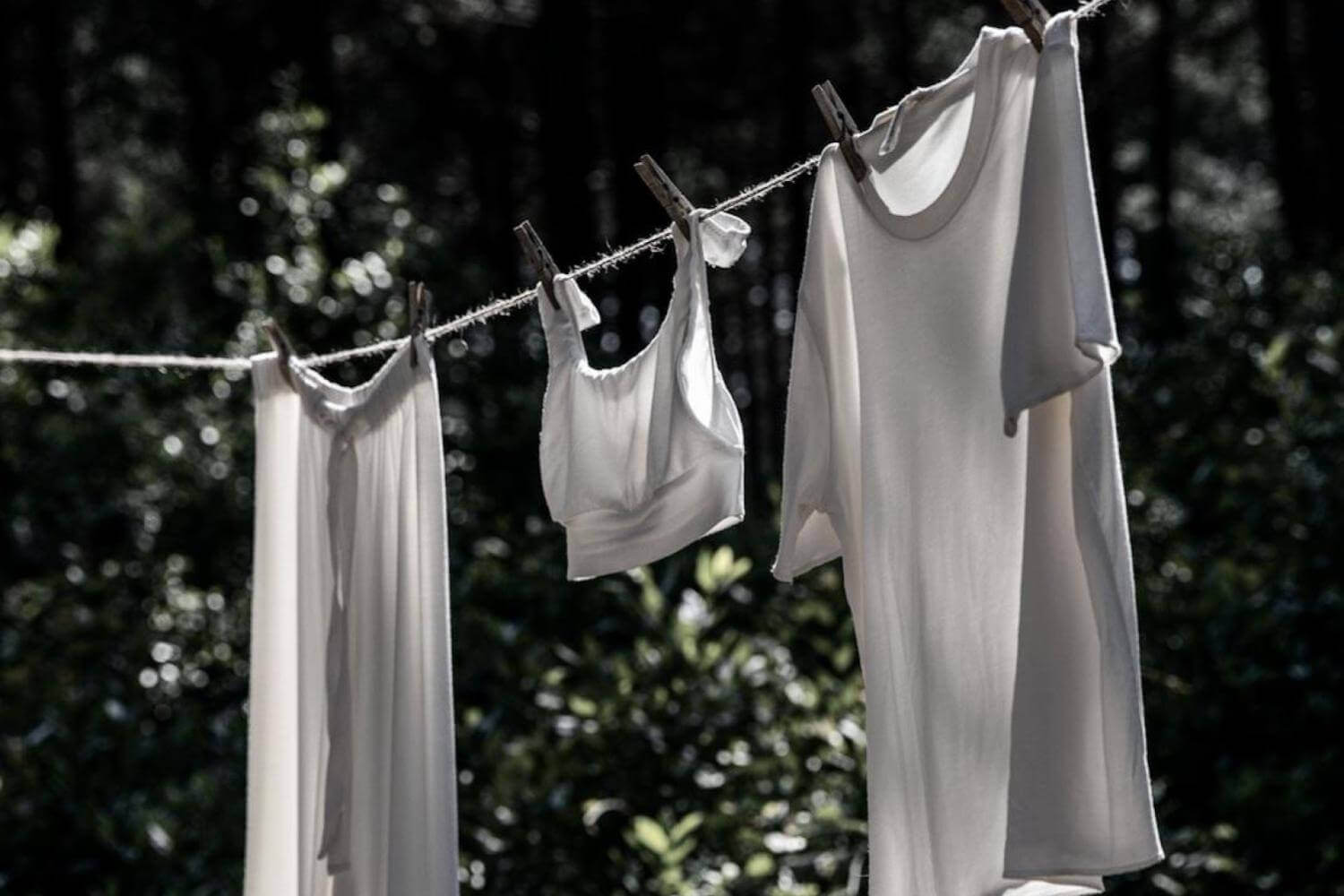
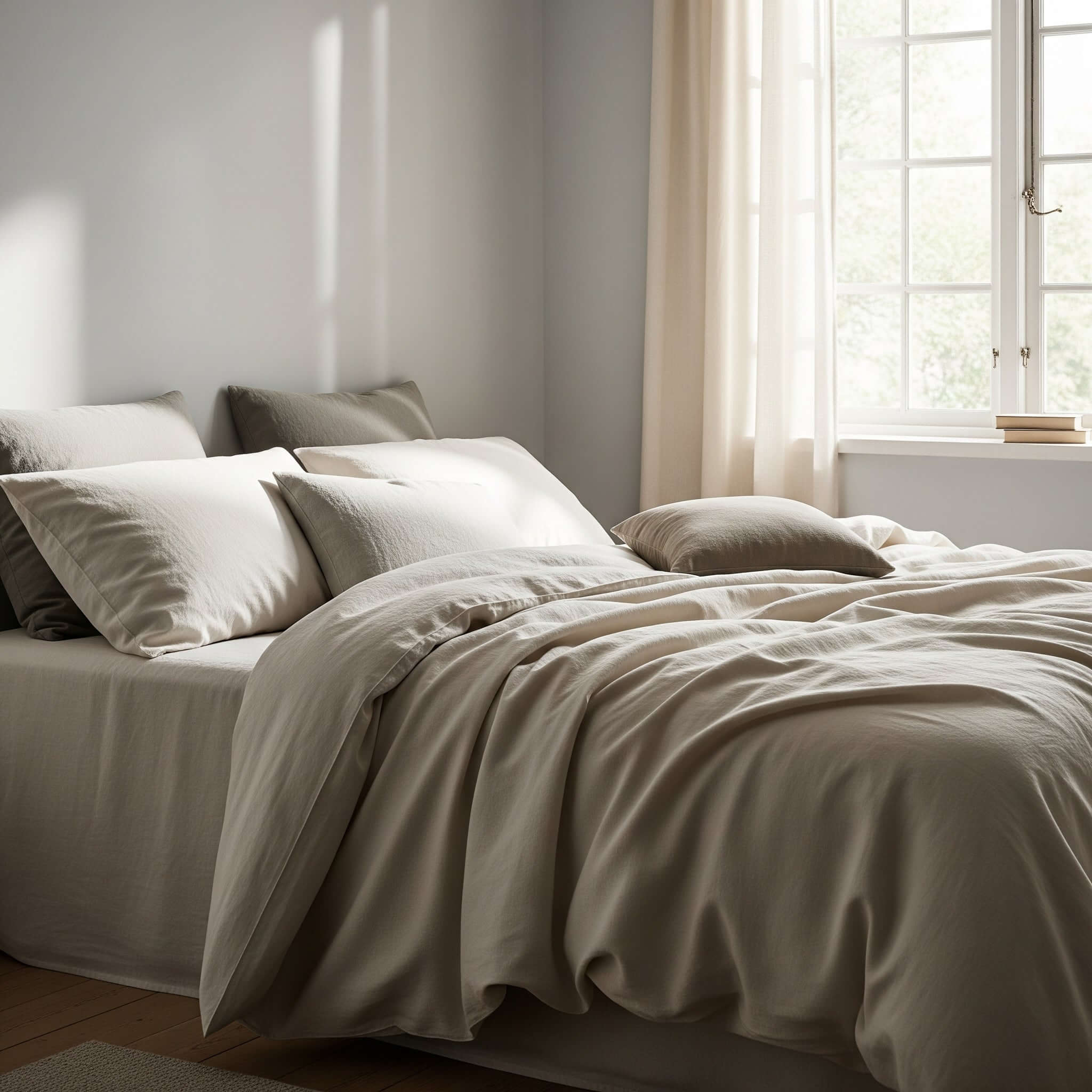

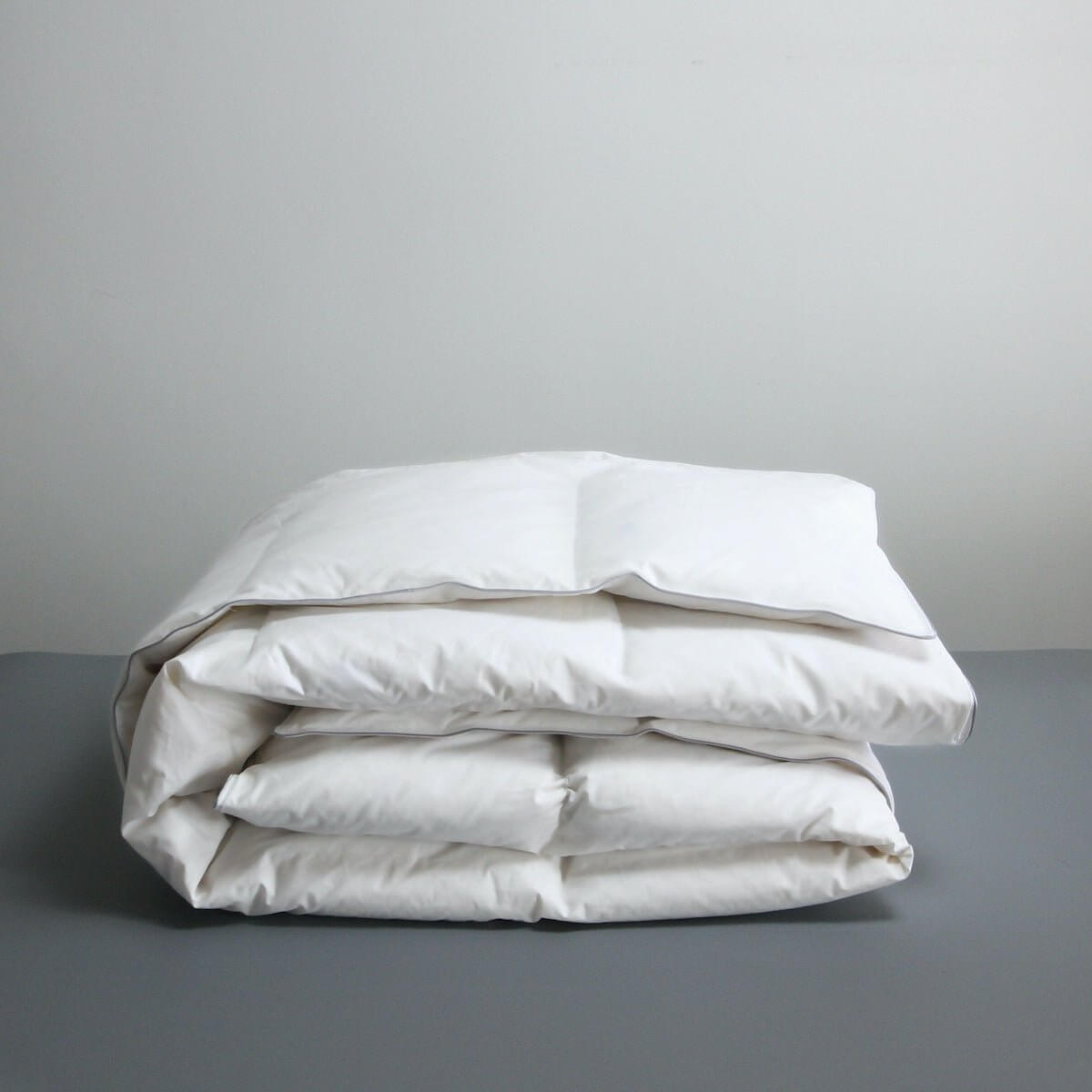
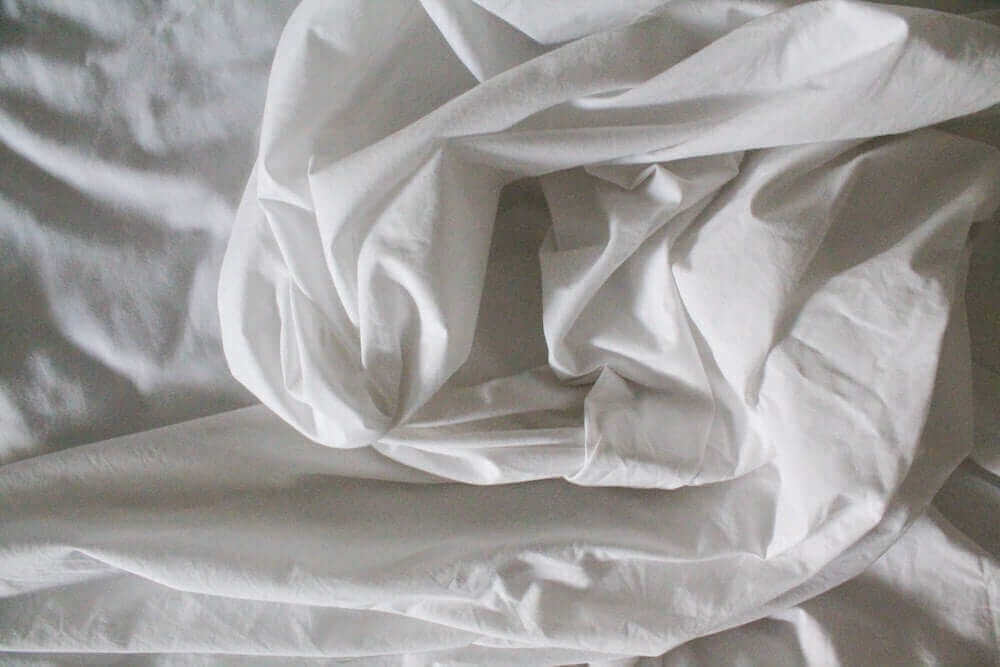
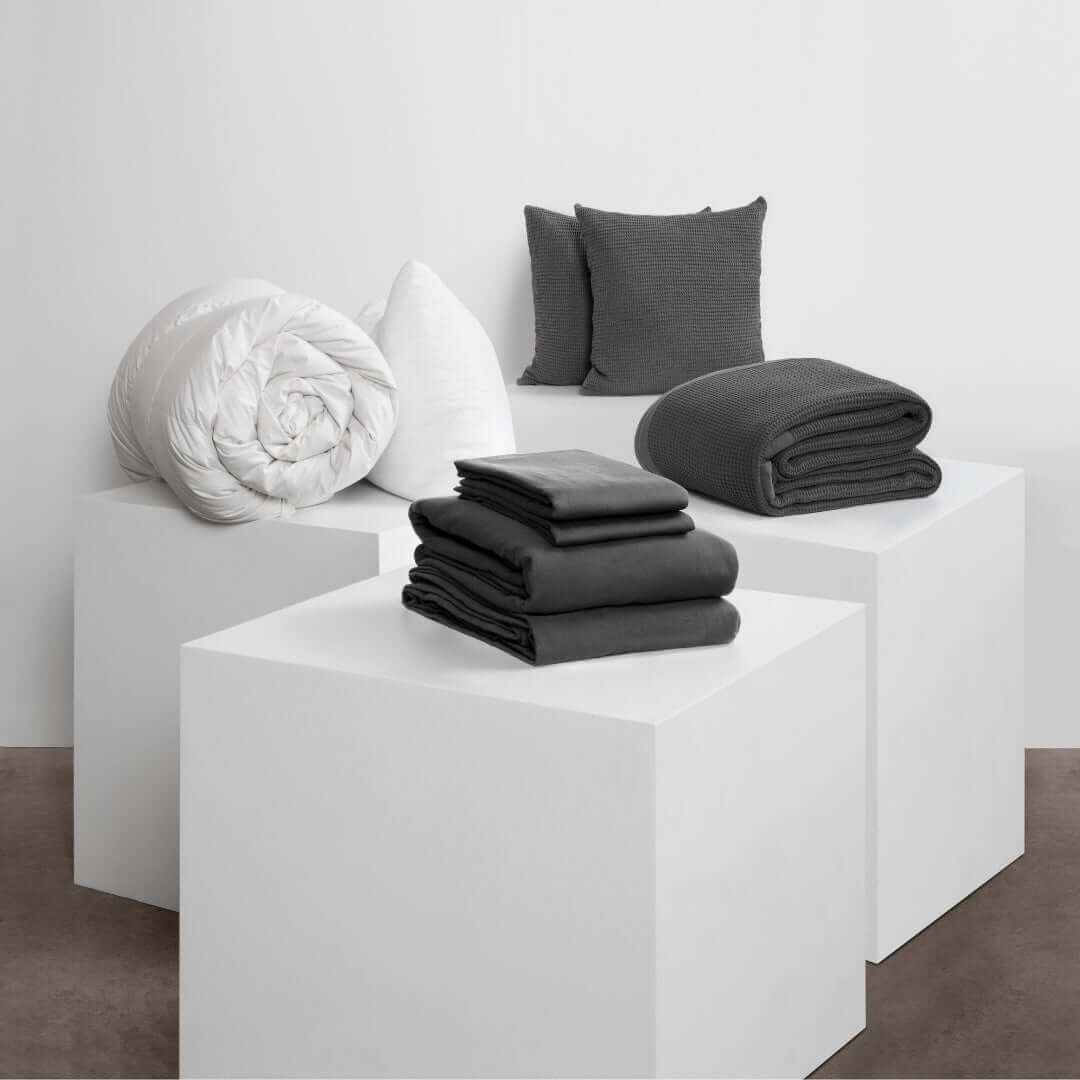

Share:
Flat Sheets vs Fitted Sheets - What's the Difference?
Autumn Bedroom Decorating Ideas